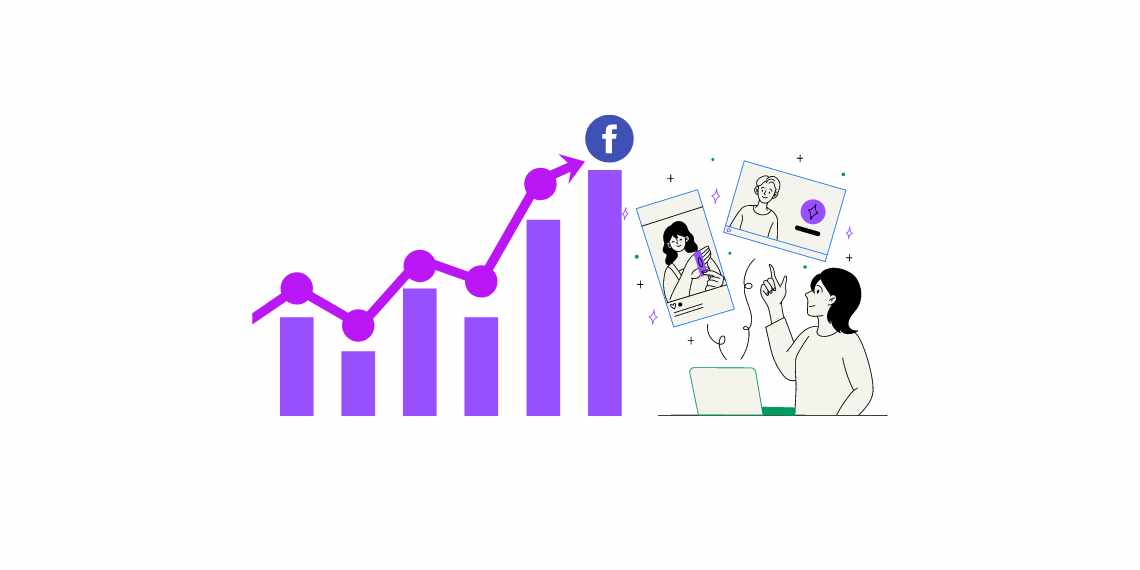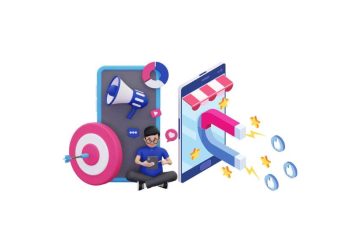Estimated Ad Recall Lift Rate is a metric that Facebook uses to measure how likely people are to remember your ads after seeing them. It is based on a number of factors, such as the quality of your creative, the relevance of your message, and the frequency of your impressions. In this article, we will share some tips on how to increase your Estimated Ad Recall Lift Rate and get more value from your Facebook ads. We will also show you some real-life examples of ads that have high recall rates and why they work.
What is Estimated Ad Recall Lift Rate and Why Does It Matter?
Estimated Ad Recall Lift Rate is an estimate of the additional number of people who will remember seeing your ad within two days, compared to the number of people who would not have seen it at all. It is expressed as a percentage of your reach.
For example, if your ad reaches 1000 people and has an Estimated Ad Recall Lift Rate of 10%, it means that 100 more people will remember your ad than if you had not run it at all.
Estimated Ad Recall Lift Rate is important because it indicates how memorable and effective your ads are. The more people remember your ads, the more likely they are to take action on them, such as visiting your website, signing up for your newsletter, or buying your product.
Tips to Increase Your Estimated Ad Recall Lift Rate
If you’re looking to improve your Facebook ad performance and increase your Estimated Ad Recall Lift Rate, there are several tips and strategies you can use. In this section, we’ll explore each of these tips in more detail, including subheadings for easy navigation.
1. Use High-Quality Images and Videos
The first tip to increase your Estimated Ad Recall Lift Rate is to use high-quality images and videos in your ads. Visual content is more engaging and memorable than text alone, so it’s important to use visuals that capture attention and convey your message clearly.
When selecting images and videos for your ads, make sure they are high-resolution and relevant to your brand and message. Avoid using stock photos or generic visuals that don’t stand out or resonate with your audience. Instead, use original visuals that showcase your products or services in a unique and compelling way.
2. Use Catchy Headlines and Copy
The second tip is to use catchy headlines and copy that highlight your unique value proposition and call to action. Your ad copy should be concise, compelling, and relevant to your target audience. Use language that resonates with your audience and motivates them to take action, whether that’s clicking through to your website or making a purchase.
When writing your ad copy, focus on the benefits of your products or services and how they can solve your audience’s problems or meet their needs. Use clear and concise language that is easy to understand and avoid using jargon or technical terms that may confuse your audience.
3. Use Relevant Targeting and Placement Options
The third tip is to use relevant targeting and placement options that match your audience’s interests and behavior. Facebook offers a wide range of targeting options, including demographics, interests, behaviors, and more. Use these options to reach the right people at the right time with the right message.
When selecting your targeting options, make sure they are relevant to your brand and message. Avoid using broad targeting options that may reach a large audience but are not likely to convert. Instead, use specific targeting options that are more likely to reach your ideal customers.
4. Test Different Variations of Your Ads
The fourth tip is to test different variations of your ads to find out what works best for your campaign goals and budget. Try testing different images, headlines, copy, and targeting options to see which combinations perform best. Use Facebook’s split testing feature to run experiments and gather data on what works and what doesn’t.
When testing your ads, make sure to only test one variable at a time to ensure accurate results. For example, if you’re testing different images, keep the headlines, copy, and targeting options the same. This will help you isolate the variable you’re testing and make data-driven decisions about what works best.
5. Monitor and Optimize Your Ad Frequency and Delivery
The fifth and final tip is to monitor and optimize your ad frequency and delivery to avoid overexposure and ad fatigue. Make sure to set frequency caps and adjust your delivery settings to ensure that your ads are being shown to the right people at the right time. Use Facebook’s ad reporting tools to track your ad performance and make data-driven decisions about how to optimize your campaigns.
When monitoring your ad performance, pay attention to metrics like reach, frequency, and engagement. If you notice that your ads are not performing as well as you’d like, try adjusting your targeting options, ad copy, or visuals to see if that improves your results. By monitoring and optimizing your ad frequency and delivery, you can avoid overexposure and ad fatigue and achieve better results for your business.
Demystifying High Facebook View-Through Conversions
7 Essential Tips to Boost Your Facebook Ads Performance
Real Life Eaxamples of Estimated Ad Recall Lift Rates
Let’s look at some examples of ads that have high Estimated Ad Recall Lift Rates and why they work.
Example 1: Airbnb
Airbnb is a platform that connects travelers with hosts who offer unique accommodations around the world. Their ads often feature stunning images and videos of their properties and destinations, along with catchy headlines and copy that invite viewers to explore new places and experiences.
For example, this video ad showcases a beautiful treehouse in Bali, Indonesia, with the headline “Live in the trees”. The ad captures attention with its visual appeal and curiosity, and conveys a clear message of what Airbnb offers: a chance to live in a dreamy location with a local host.
The ad also uses a call to action button that says “Book now”, which encourages viewers to take action and book their stay. The ad has an Estimated Ad Recall Lift Rate of 18%, which means that 18% more people will remember seeing it than if it had not run at all.
Example 2: Spotify
Spotify is a streaming service that offers millions of songs, podcasts, and playlists for every mood and occasion. Their ads often feature colorful graphics and animations that reflect their brand identity and personality, along with catchy headlines and copy that highlight their features and benefits.
For example, this carousel ad showcases different playlists for different moods, such as “Chill”, “Happy”, “Sad”, and “Angry”. The ad captures attention with its vibrant colors and dynamic transitions, and conveys a clear message of what Spotify offers: a personalized soundtrack for every moment.
The ad also uses a call to action button that says “Listen now”, which encourages viewers to take action and download the app or sign up for the service. The ad has an Estimated Ad Recall Lift Rate of 16%, which means that 16% more people will remember seeing it than if it had not run at all.
Conclusion
Estimated Ad Recall Lift Rate is a useful metric that can help you measure how memorable and effective your Facebook ads are. By following some of the tips and examples we shared in this article, you can increase your Estimated Ad Recall Lift Rate and get more value from your Facebook ads.

Hello, I’m Ali Raza, the brain behind Digital Realm Trends.
Hailing from the vibrant world of digital marketing, I’ve honed my skills over years. Based on my experience, I’m here to unravel the complexities of digital marketing, analytics and paid marketing, crafted for individuals like you. Join me in uncovering the power of digital marketing tools and strategies, fueled by experimentation and insights.




